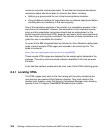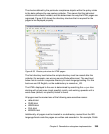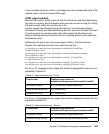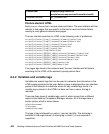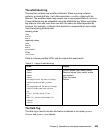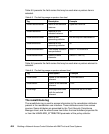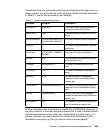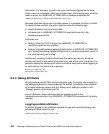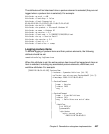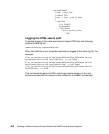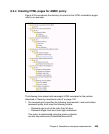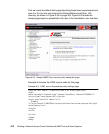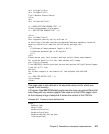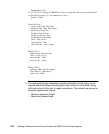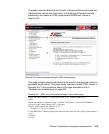406 Building a Network Access Control Solution with IBM Tivoli and Cisco Systems
information. For example, to enable the user interface to display the Fix Now
button even if a remediation URL has not been sent, the following entry could be
made in either the HANDLER_ATTRIBUTES or handlers.properties file:
remediationdialog.urlRequiredForRemediation=false
Because attributes can be set in multiple places, it is possible for them to conflict.
To resolve these conflicts, the policy collector uses the following logic:
Innate attributes cannot be overridden.
Attributes set in HANDLER_ATTRIBUTES override those set in the
handlers.properties file.
Examples are:
Setting "client.id=1234" in either the HANDLER_ATTRIBUTES or
handlers.properties has no effect.
Setting "remediationdialog.logSearchPath=false" in HANDLER_ATTRIBUTES
and "remediationdialog.logSearchPath=true" in handlers.properties results in
the attribute being set to false.
Additionally, providing multiple entries with the same key name in the same
location will result in one value being used only, and which value is arbitrary. For
example, setting the following will result in extrajars being set to either logging.jar
or uiprovider.jar, but which one is arbitrary.
extrajars=logging.jar
extrajars=uiprovider.jar
8.3.3 Debug attributes
Writing posture policy HTML can be a complex task. To simplify some aspects, a
few debugging attributes are provided by the default remediation user interface.
All of these attributes require that the "debug=true" setting is present in the
"[debug]" section of the client.pref file.
Like all attributes, these attributes may be specified in either the
handlers.properties file or the HANDLER_ATTRIBUTES parameter of the policy
collector.
Logging available attributes
To enable logging of the attributes available for use with remattribute tags, the
following attribute should be set:
remediationdialog.logAttributes=true



